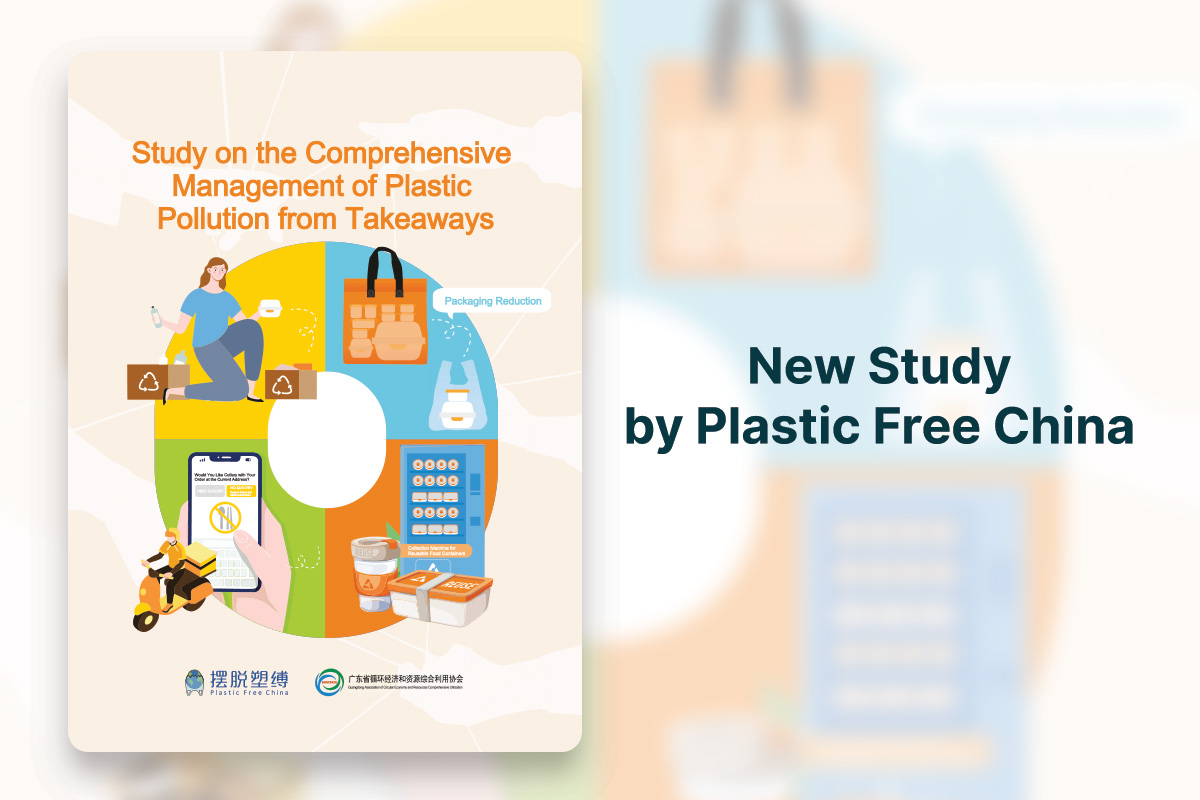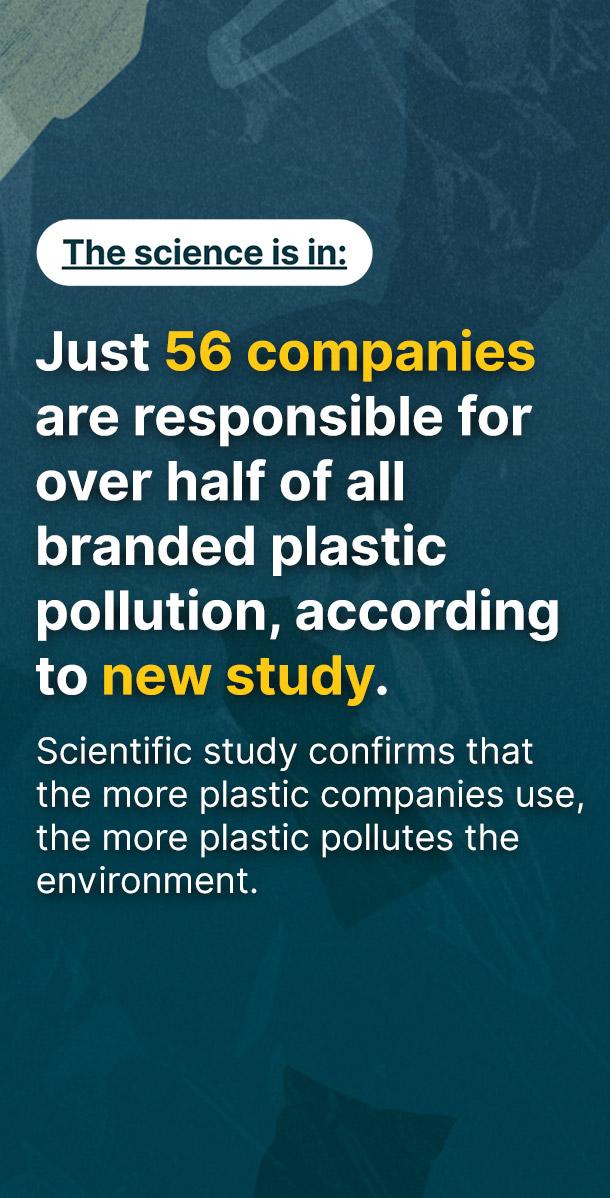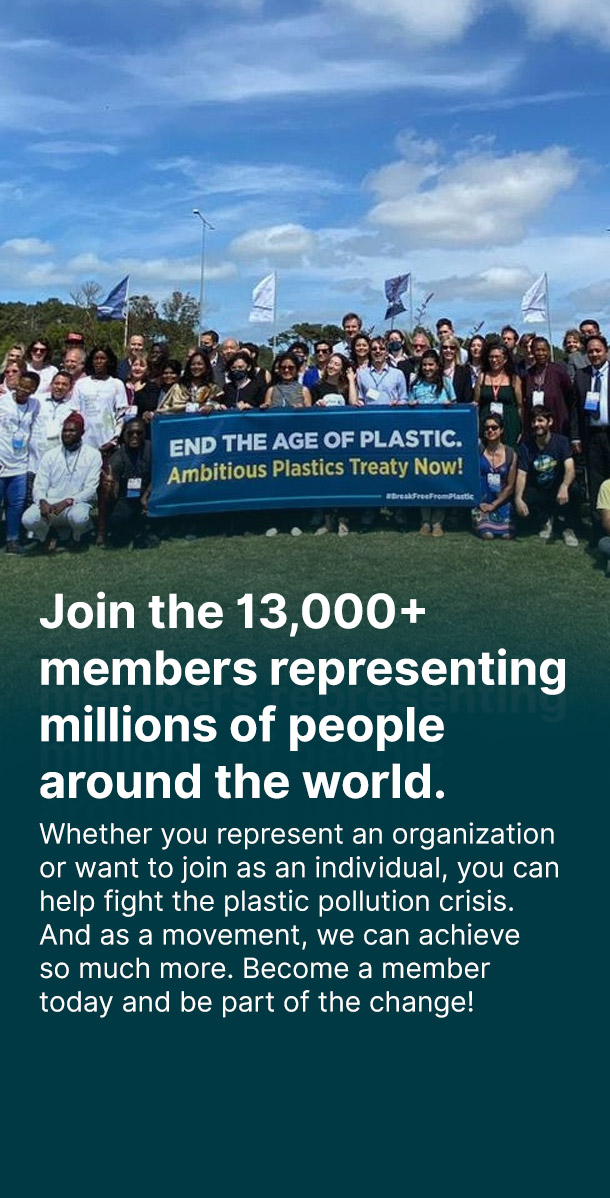Executive Summary
The takeaway industry is an emerging industry that has created enormous economic scale and social value in a very short period. At the same time, the booming period of the takeaway industry also coincides with a critical period for human beings to deal with global environmental issues such as climate change and plastic pollution. The takeaway industry should pay timely attention to the solid waste pollution and carbon emissions generated by plastic packaging spawned by takeaways, intervene at the early stage of the industry's development, and strive to decouple the environmental footprint of packaging from the industry's economic scale.
China's takeaway market is proliferating, with the market size growing from $301.2 billion in 2017 to over $1 trillion by 2021. Orders are expected to exceed 33.9 billion orders per year by 2025. The rapid growth of takeaway orders has brought about a large amount of plastic packaging waste, causing significant pressure on the environment. Takeaway packaging mainly consists of disposable takeaway containers, cutlery, and bags, 80% of which are made of plastic. Accurate statistics on the total amount of takeaway packaging are pretty tricky to combine with the research estimates of significant scholars in recent years, which roughly concluded that the total amount of takeaway plastic packaging waste in China is in the range of 460,000 tons to 1,680,000 tons per year.
Although this total takeaway packaging waste in China's total municipal waste is still relatively low, with the development of the takeaway business, takeaway plastic packaging increased the pressure and cost of domestic waste disposal, as well as the corresponding carbon emissions. If the price of health loss due to incineration is included, the social cost of waste disposal of takeaway containers is even higher. These costs are currently shared by society as a whole and do not reflect the polluter pays principle. Existing research results on the carbon emissions of takeaway packaging estimates vary widely, and a combination of research results estimates that the annual carbon emissions of takeaway plastic packaging in China range from one million tons to two to three million tons. At the same time, China's waste treatment capacity is moving toward a pattern of incineration, and the carbon intensity of plastic incineration is very high, close to or even higher than the carbon intensity of the plastic production stage. So, if the linear consumption pattern of disposable takeaway packaging does not change, the carbon footprint of takeaway packaging will continue to grow as waste incineration rates increase.
Since the National Development and Reform Commission (NDRC) and the Ministry of Ecology and Environment (MOE) issued the Opinions on Further Strengthening the Control of Plastic Pollution in 2020, various policies and regulations related to the control of plastic pollution have put forward requirements for plastic reduction in the takeaway industry. Local governments have also taken active action, such as Beijing, Shanghai, Shenzhen, Chongqing, and other cities, which have clearly stipulated that takeaways are not allowed to actively provide disposable tableware and have corresponding penalties. A number of countries and regions around the world are also actively addressing the issue of plastic pollution from takeaways by adopting diverse measures. For example, the European Union's proposal to amend its packaging and packaging waste regulations proposes that 10% of takeaway containers be reusable by 2030, and New York City has passed the "Skip the Stuff" bill, which prohibits the active provision of disposable cutlery in takeaway orders.
China's takeaway market accounts for nearly half of the total takeaway market and started early. China's mainstream takeaway platforms have also made more attempts to control the pollution of takeaway plastic packaging. The goals, strategies, and results of takeaway packaging pollution control from Meituan and Ele.me largely reflect the current situation of plastic pollution control in China's takeaway industry. A review of these measures shows that there are still many challenges in the control of plastic pollution in the takeaway field, and the measures that have been taken are either ineffective or cannot achieve the expected environmental protection and carbon reduction effects.
01
"No cutlery" orders account for a small proportion and have not been effectively implemented. The proportion of Meituan's "No cutlery" orders in the total number of orders is about 12%, and Ele.me has not published corresponding data. Relevant research shows that the proportion of those "environmentally friendly orders" that do not require cutlery that really do not provide cutlery as required also has room for improvement.
02
Material substitution programs not only increase costs but also may bring more serious environmental pollution. In addition to reducing packaging through measures such as "No cutlery," platforms are also investing in R&D and promoting material substitution of traditional plastics from the perspective of the green supply chain of takeaway packaging, with paper-based and biodegradable packaging as the primary focus. However, more and more studies using whole-life environmental impact assessment methods show that, in most cases, the whole-life environmental performance of traditional disposable plastic packaging is better than that of disposable packaging made of other materials. Disposable material substitution is essentially a continuation of the linear mode of production, consumption, and disposal; continuing to invest in this direction is undoubtedly only an increase in costs and resource inputs, almost impossible to produce environmental effects, and will even produce adverse effects.
03
The recycling rate of takeaway plastic containers is low and remains to be scaled up. Currently, the recycling model for takeaway containers primarily relies on market-driven and spontaneously dispersed recycling methods, in addition to initiatives such as takeaway platforms building recycling chains, partial cooperation between government and enterprises, and the "integration of two networks." Apart from a few pilot cities and regions, plastic containers can only be treated as "other waste" and enter the incineration or landfill process, resulting in a low recycling rate.
04
Long-term, environmentally beneficial innovative solutions such as the development of reusable containers for circular use significantly lag. Reusable container projects promoted by takeaway platforms such as Uber Eats, SkipTheDishes, and Foodpanda have emerged in North America, Europe, and Hong Kong, China. However, in mainland China, only the "Shuangti" project, which is based on closed-loop scenarios, serves as an innovative solution for reusable takeaway containers. Two takeaway platforms have yet to include a reusable container model in their plastic reduction strategies.
Based on the analysis of existing measures and effectiveness in addressing plastic pollution in the takeaway industry, this study proposes strategic recommendations and actionable suggestions for different stakeholders. Plastic pollution governance in China has entered a stage of systematic and comprehensive management, covering the entire process from source reduction to end-of-life treatment, following the priority sequence of waste management. The governance principle should first focus on increasing the proportion of "No cutlery " orders and fully implementing it, minimizing unnecessary packaging to reduce the use of single-use plastics directly. For unavoidable takeaway packaging, developing and adopting reusable packaging systems is recommended. For single-use plastic packaging already produced, classification and recycling as low-value recyclables for reuse is necessary. Finally, after comprehensively assessing the environmental impacts of packaging materials throughout their lifecycle, material substitution for traditional plastic packaging should be considered.
In the governance process, emphasis should be placed on source reduction measures such as direct reduction and reusable containers. Introducing extended producer responsibility systems to allocate collected funds to support innovative reusable container models and scale up the recycling of disposable containers is essential. Platforms should be held accountable by supervising and managing the actions of platform ecosystem participants through their unique hub functions, data, and technological advantages.
For specific action strategies, this study proposes action recommendations for food delivery platforms, Food Delivery in Enterprise, government, and consumers:
Government:
- Introduce reduction targets for takeaway plastic packaging, including the implementation of reusable systems. Clearly designate relevant supervisory departments to lead the formulation, supervision, and implementation of comprehensive policies for managing takeaway plastic pollution.
- Implement policies such as extended producer responsibility(EPR), wherein producers, platforms, and businesses using disposable packaging are charged fees for end-of-life disposal, with proceeds supporting innovative reusable container models and the scaled-up recycling of disposable packaging.
- Optimize the regulatory and enforcement mechanisms for overseeing takeaway platform plastic packaging pollution, requiring these platforms to fulfill their environmental protection responsibilities effectively. Furthermore, it demands that takeaway platform enterprises compile and disclose their plastic packaging usage data, reduction measures, and effectiveness data.
- Support innovative commercial projects such as reusable container initiatives, reducing enterprise investment risks and alleviating cost pressures through fiscal incentives.
- Integrate takeaway plastic containers into the guidance directory for low-value recyclables, aligning with the progress of urban low-value recyclable waste classification and collection systems. Promote the convergence of various waste collection networks, enhance support policies such as land planning and collection subsidies, and facilitate the recycling of takeaway plastic containers.
Takeaway Catering Platforms:
- According to " The Administrative Measures for the Use and Reporting of Disposable Plastic Products by Business Operators in the Commercial Sectors," quantify, evaluate, and disclose data on the usage of plastic packaging for takeaway orders.
- Establish reduction targets for plastic packaging used by platform enterprises for takeaway orders.
- Develop action plans to achieve the reduction targets for plastic packaging used in takeaway orders on platforms, monitor and evaluate the actual effectiveness of the reduction, and disclose the progress of the reduction.
- Increase investment and support for innovation in reusable systems for takeaway containers. Cultivate infrastructure for reusable containers and promote consumer habits of reusability.
- Utilize their own data and technological advantages to further optimize features and interfaces related to "No cutlery " and increase the proportion of consumers choosing this option. Enhance the rules for merchants and clarify the corresponding reward and punishment system for merchants to implement "no cutlery" on the premise of increasing the protection clauses for merchants. Provide a simple, straightforward, and independent feedback mechanism for consumers to promote the implementation of "No cutlery". Disclose data on the number of orders with "No cutlery " and actual implementation data. Evaluate the effectiveness of the "No cutlery " feature.
- Conduct scientific evaluations and cautiously explore the substitution of disposable plastics with alternative materials. Recommend platform merchants to use other disposable materials as substitutes based on evidence supporting environmental benefits superior to traditional disposable plastics.
Takeaway catering enterprises:
- In accordance with relevant laws, regulations, and normative documents, adhere to plastic usage restrictions and minimize the use of disposable plastic products while ensuring the integrity of the food. Based on " The Administrative Measures for the Use and Reporting of Disposable Plastic Products by Business Operators in the Commercial Sectors", sign a self-discipline commitment for the use of disposable plastic products and record and submit relevant data on the use and recycling of disposable plastic products.
- Strengthen personnel training and standardize enterprise operations to implement "no cutlery" orders strictly.
- Large-scale chain restaurants should enhance cooperation with food delivery platforms and other stakeholders to jointly build a sustainable food delivery packaging system. They should actively invest resources and participate in the development and implementation of reusable food delivery containers and delivery systems.
Consumer:
- Choosing sustainable takeaway packaging, reducing the selection of disposable cutlery, and supervising platforms and merchants to implement "No cutlery" orders.
- Consumers should express a preference for green, reusable takeaway packaging and actively practice it by choosing to use reusable packaging provided by merchants or bringing their own containers for packaging.
- In cities with pilot programs for sorting low-value recyclable materials, consumers should cooperate by cleaning and sorting disposable takeaway packaging for recycling.




